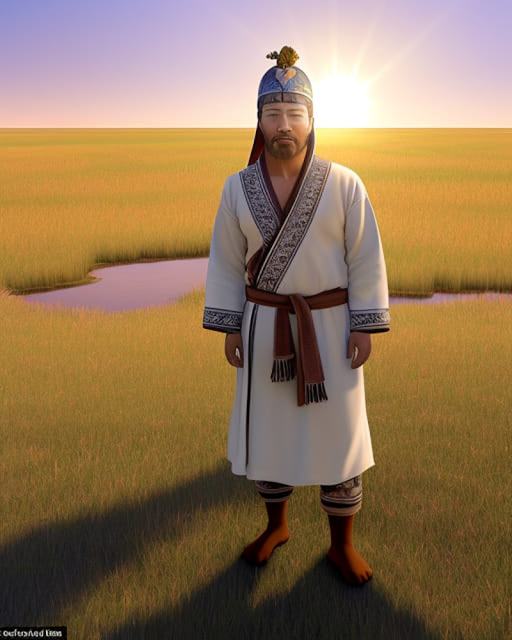We all know that ' Usha' (उषस्) is the name given to Goddess of Dawn in Vedas. We in India, consider Usha as the mild morning sun, which lasts for a few minutes before transforming to the blazing hell, called in Sanskrit as 'Aditya' or many other names. However, was this name 'Usha' really given originally to the morning sun, that lasts for only a few minutes?
Similarly, 'Ushshakala' (उषःकाल) is thought by us as the dawn or pre-dawn period of first light. However again, is it really that pre-morning hour or something else?
With 'Usha' being a short period phenomenon, One feels surprised to find as many as 20 'Suktas' (Hymns) of Rigveda ( the oldest Veda), praising this Goddess. Almost all
Rigveda 'Mandalas' or books, which are considered as most archaic (nos. 3 to 7),
have 'Suktas' that praise 'Usha', some of which, are composed by sages with very unfamiliar names such as
Shunah-shepa, Goutamah, Atreya, Angirasah.
Rigveda calls the beauty of Goddess Usha as incomparable,
incredible, and describes her as a beautiful dancer, who changes her brilliant
glowing attire and jewelry each day. She is described to arrive in a different attire each day and Rigveda even assigns many different names for this Goddess. Her arrival on the
horizon from darkness of night is compared to leaving of a cowshed by a cow. As
she rises on horizon, Rigveda describes her rise as throwing away of her veil
of golden brilliant glow and baring a breast.
Rigveda calls Usha as a sister of the night. In some 'Suktas' she is called wife of the sun and in some, the mother. She is described as very
friendly with Asvins, the heavenly twins. She rides a golden chariot pulled by
horses, which take her up in the sky.
How long does the Goddess Usha shine in the sky? Any person in India would answer this, as for a few minutes. Maybe some people in Kashmir may opt, for a time duration longer than that. Yet, another archaic book , considered as part of Vedas, 'Taitariya Bramhana' comes up with answers that are quite puzzling. As per this book, 'Usha' or the dawn may last, till all the oblations are done and 'Suktas' recited. Or it may linger on and on. Or it may even be there forever or 'Shashwat'.
After reading what these books say, it's time to ask some questions.
I have made a list of few obvious questions. A few more can be easily added.
What was the need for another deity, when deity called as Aditya was already
there, for the entity we know as the Sun and famous 'Gayatri' hymn to praise him?
Why so much importance was given to a transitory phenomenon
of a short duration that took place each day?
Why it is said that this Goddess Usha comes up with changed appearance
each day?
How can you call her sister of the night, when both have a
large time interval between them in form of a solar day?
How can it linger on or stay forever?
Before we find answers to these questions, let us first do a
little travel. We shall move to an open grassland in southern Russia, where
horizon is visible on all sides, or precisely at 52 deg. N latitude and find out
sunrise, sunset timings for two days in December.
On 1st December the sun rises at 8.17AM and sets at 3.56PM.
Noon is at 12.07PM and sun rises only 14.4 degrees above horizon. Sunrise
position is 28.4 deg. east of due south.
Next on 22nd December the sun rises at 8.49AM and sets at
3.54PM. Noon is at 12.22PM and sun rises only 12.2 degrees above horizon.
Sunrise position is 29.6 deg. Southeast of due east.
With this data, I think we can attempt to find answers to our questions.
The sun at these latitudes and days is so mild and pleasant to look at, that the sages found nothing unusual in naming it as another deity.
At these latitudes, it is no longer a transitory phenomenon. Goddess Usha stays
there at least till noon if not later.
As seen above, the sunrise location, time, and height above
horizon at noon, on each progressive day, keeps changing, along with the brightness or dazzle of the sun.
With the sun being so mild, there is no differentiation between dawn and day. We can have therefore, only dawns and nights, eliminating the day altogether.
Since dawn just lingers on, a poet may as well call it as forever of 'Shashawat'.
Coming back to the concept of 'Ushshakal' now, at these latitudes, it is no longer just the time
of dawn or pre-dawn hour. We can say, it rather begins on some day after autumnal equinox, when sun has
become so mild that it couldn't be called 'Aditya' or 'Hiranyagarbha' any longer. 'Ushshakal' should end on some day before spring equinox, when the Sun is back again a
blazing hell.
The conclusion therefore, is straight forward and simple, the archaic hymns of Rigveda were obviously composed not in India, but at a place somewhere in the north, like a place at latitude, say around 52 deg. North. Later, when Rigveda came to India, entire concept of the dawn, as a separated entity, from the day, no longer remained appealing or relevant, to sages, and was soon forgotten.
Goddess 'Usha' no longer sparkles.
--------
Copyright for text and images
Chandrashekhar Athavale
References
1. Ancient Indo-Europeans
By Stanislav A Grigoriev
2. Arctic home of the Vedas
By. B.G. Tilak


No comments:
Post a Comment